Review: MGI MARCK-15 Hydra
Billed by its maker as “the most advanced modular AR-15 on the planet,” the MGI MARCK-15 Hydra Modular Weapons System is designed to allow the user to quickly change barrels and easily refit the firearm to accept different types of magazines. It accomplishes this by way of two key innovations: a modular lower receiver that allows different magazine wells to be installed, and a proprietary upper receiver that utilizes a unique locking assembly that allows barrels to be quickly installed and removed.
Unique design features of the MARCK-15
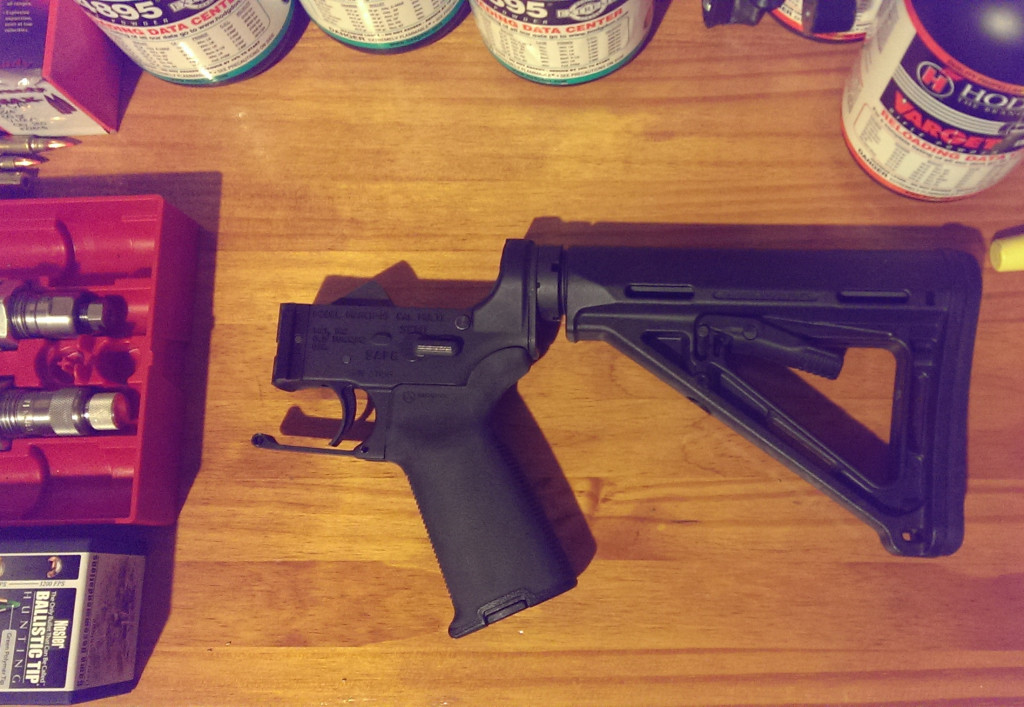
The serialized MGI lower receiver is very small, as it only comprises the portion of the lower receiver behind that magazine well containing the trigger group. The magazine well is a separate component that slides onto rails on either side of the lower receiver. The magazine release also serves as a takedown latch for the lower, and when the release is actuated it retracts a small locking tab, allowing the two components to slide together. Let the release go, and the two halves lock together. Attaching the trigger guard to the magazine well completes the union and further secures the lower. The takedown and pivot pins provide support on either end, keeping the lower from sliding apart when you change magazines.
MGI currently offers magazine wells that are compatible with magazines for the AR-15 and AK-47/AKM rifles. MGI also offers a magazine well and blowback bolt to shoot 9mm from magazines designed for Colt-style submachine guns (or from modified magazines designed for Uzi submachine guns). The company has promised a .308 magazine well and has published a video showing a .308 Hydra being test-fired, but the consumer product has yet to make it to market.
The upper barrel locking assembly is unusual but succeeds in making a barrel change pretty painless. Under the forend, there is a hard rubber rail cover, held in place by a heavy wire arm that snaps down. Flipping that arm up and sliding the cover off reveals two steel control arms for the locking lugs that engage the barrel collar. To remove the barrel, simply lock the bolt back, rotate the arms out to 90 degrees, and the barrel and gas tube easily come free. To install a different barrel, simply line up the barrel and gas tube, slide them into the receiver, rotate the locking arms back to the locked position, and replace the rail cover, which also secures the locking arms in place.
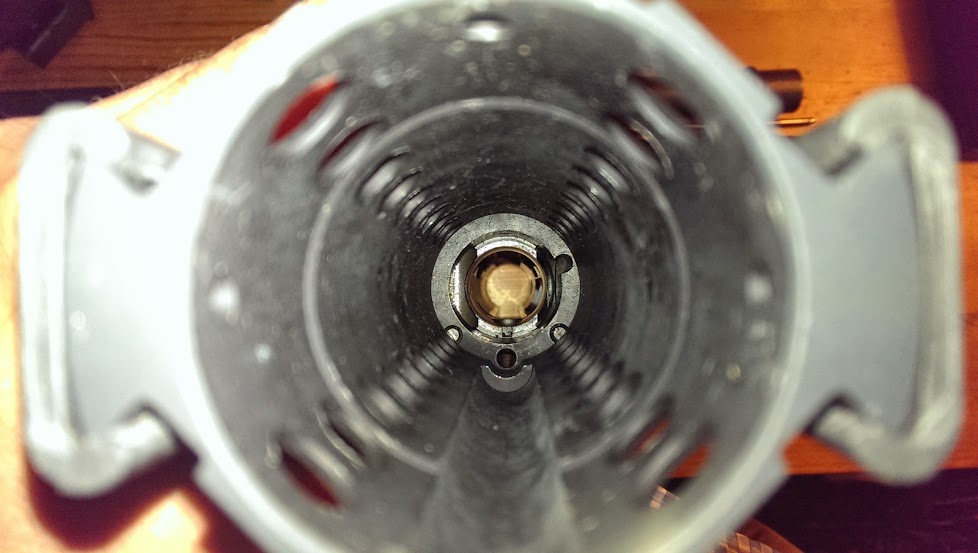
Interior view of forend, showing one locking lug engaged (left) and the other disengaged (right)
Building and testing the rifle
The MGI rifle tested here was purchased piece by piece, rather than as a complete firearm. As previously suggested to readers, I originally selected the MGI modular lower receiver in order to have it registered as a short-barreled rifle (SBR), thinking that if it became more difficult to get Form 4s done some time in the future (see, e.g., ATF 41P) I would already have a registered SBR in the most configurable form possible. I asked a local NFA dealer to register an MGI lower as an SBR, and then I bought it from him on a Form 4.
Though I appreciate the conceptual innovation behind it, after initial difficulties in getting the rifle built and four months of testing I have mixed feelings about MGI’s system.
First configuration: 7.62x39mm SBR
After buying an AK magazine well to marry up to my lower, I negotiated a deal to buy a friend’s complete 7.62x39mm upper half. However, after further research I discovered that using it with the MGI lower and AK magazine well would require substantial modifications to the upper receiver and bolt carrier. Instead, I bought an MGI Hydra upper and MGI’s custom bolt carrier designed to work with AK magazines. Unfortunately, when the upper arrived, it would not readily mate with my MGI lower. The upper receiver stud ultimately had to be filed down in order to clear the interior surfaces of the lower (since the lower is the registered NFA item the choice was made to modify the more readily replaceable part).
The internal dimensions on the AK magazine well are something else of which to be cognizant. Since the magazine well is aluminum, I originally thought I would go with Magpul’s new polymer AK magazines to reduce wear on the mag well. Bad idea. The Magpul magazines would not fit without substantial modification with a rotary tool. I appreciate the ergonomic advantages from how AK magazines go in and out of MGI’s magazine well—they still rock in, but the magazine release is in the usual location for an AR-15—so I ended up just buying the more typical steel AK mags. They work well, and magazine insertion and extraction are much easier than with an AK rifle. The Magpul incompatibility is no fault of MGI’s, since the dimensions of the Magpul AK magazines differ significantly from the traditional steel varieties.
When I went to the range, I thought I finally had the kinks ironed out. But when I stepped up to the firing line, about two-thirds of the time my trigger pull resulted in a click instead of bang. It turns out that the standard hammer spring from the lower parts kit I installed did not have enough oomph to touch off the hard primers in Russian steel cased cartridges. After installation of a stronger hammer spring, I finally managed to get the 7.62x39mm setup running.
Second configuration: 5.56x45mm SBR
The AR magazine well from MGI is compatible with standard GI magazines. Magpul’s PMAG will seat on a closed bolt, but only with some effort. It seats just fine when the bolt is open, however PMAGs do not drop free. I have two concerns about the rifle set up with the AR magazine well:
- The manner by which the lower receiver modules link up leaves lots of play in the lower. Instead of an upper and lower rattling around on their pins, you have an upper and two lower receiver modules rattling around, with that third joint in the middle of the lower adding significant play to the whole contraption. The different internal dimensions of the lower receiver prevent use of an Accu-Wedge to mitigate this loose fit.
- Although the magazine release is in the same location, the large “fence” created by the joint in the middle of the lower receiver substantially changes shooting hand ergonomics. Instead of reaching the trigger finger straight out to actuate the magazine release, the user is forced to reach around an obstacle, and actually pressing the release is awkward as well.
Fit and finish
Going from the sample in my possession, I have to say that fit and finish of MGI products leaves something to be desired. Sharp edges and burrs abound. At the price level that these components go for, I expect them to fit together and not threaten to cut me. The examples of MGI’s work that I have seen and used are not up to that standard.
Conclusion
The MARCK-15 is an interesting concept, but I wish MGI’s execution was better. Given the design and production deficiencies mentioned above, and the prices involved, I suspect that most buyers in jurisdictions with relative gun freedom would be better served by purchasing separate firearms, rather than one firearm that can be reconfigured at substantial expense. For those who live in more restrictive legal jurisdictions where they are limited to a certain number of personal firearms, or for those who are looking to avoid multiple NFA tax stamps, the benefits of the modular lower receiver may still be worth a look. Likewise, for a user who needs to be able to quickly change barrels, the Hydra upper receiver may remain an object of interest.
UPDATE: (5 Jan 2016) The Magpul PMAGs referenced above were of the first generation design. Newer PMAGs fit in the MGI AR magwell easily and drop free.

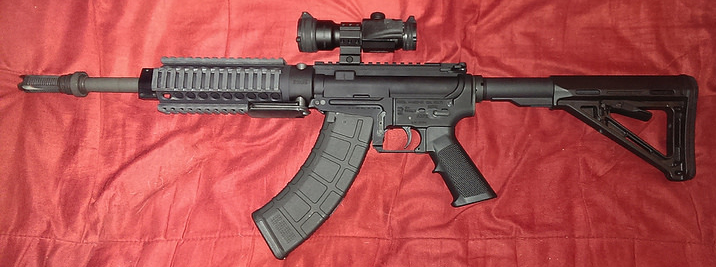
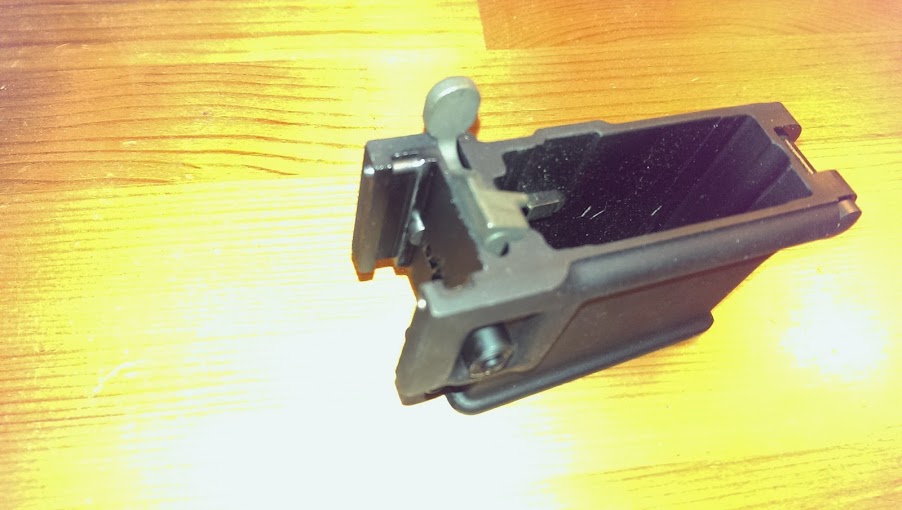

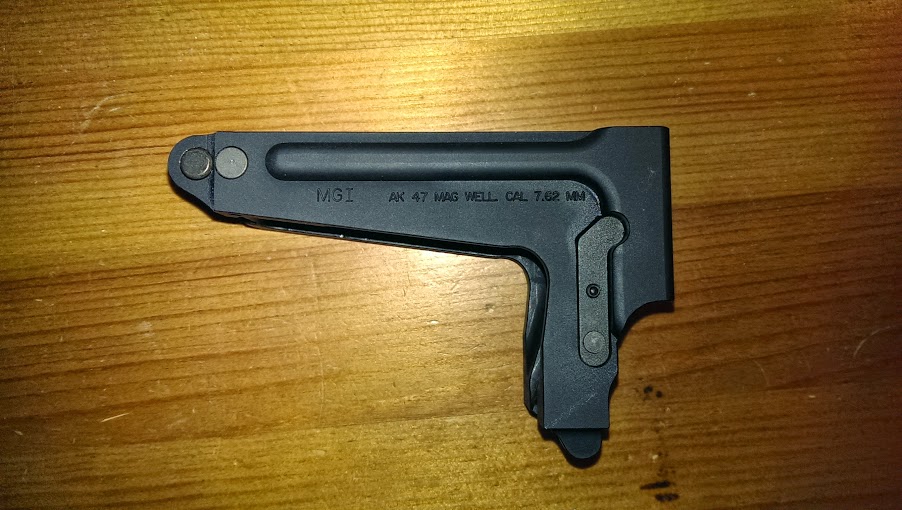

Thank you for the first honest review detailing some of the more important things I’m concerned about as I consider trying out the HYDRA. I was curious also; I had heard at one time that MGI would be offering a .308 winchester option for this platform, but the website still offers no such option (as of 10/2016). I wanted to know how the rifle would handle the stresses of the .308 caliber, and whether things like buffer tubes needed to additionally be swapped out on the lower. Also, the buffer tube mounting ‘loop’ on the lower; has it been designed to be beefy enough to handle those stresses? I’m an engineer by trade and would be interested in seeing some data regarding this.
Other than that, my only other concern would be if any standard barrel of a particular caliber would readily fit, were it not purchased from MGI? How about BCG’s, in case I wanted to keep my nickel boron one?
It seems some of the fitment issues may lie with the machining of the parts, which hopefully could be worked out in time, coupled with a good QC program.
I’m still very interested in the idea of the rifle, and would very much like to see something like this do well, especially in the .308 caliber.
Thanks for reading!
I am very optimistic that Windham Weaponry’s licensed version of the Hydra rifle resolves the QC issues, but I have not had any personal experience with the Windham product for comparison to the MGI-made rifle.
I can tell you that I have had good, positive lock-up mounting a variety of non-MGI barrels in the Hydra upper, including various length 5.56mm barrels and a 7.62x39mm barrel (as seen in the review above).
As for using non-MGI bolt carriers, good news there, too: I have used both MGI and non-MGI BCGs, and they have all worked fine. The key difference I can see between the MGI carrier and standard carriers is that there are deeper groves to clear the top of an AK magazine in the MGI version. Similarly, a major dimensional difference between the Hydra upper and a standard milspec upper is that the interior of the receiver is milled out wider in places to allow an AK magazine to seat deep enough to feed properly. For this reason, the external dimensions of the upper are larger, too: you can see on the assembled rifle that the upper protrudes a bit over the magazine well on both sides.
I have verified that MGI lowers (with the AR magwell fixed) work with standard uppers, and that the Hydra upper will work with standard lowers.
Just how loose was the gun?
also how was the accuracy of the gun compared to one using a barrel nut?
would the dolos quick change barrel system be more accurate?